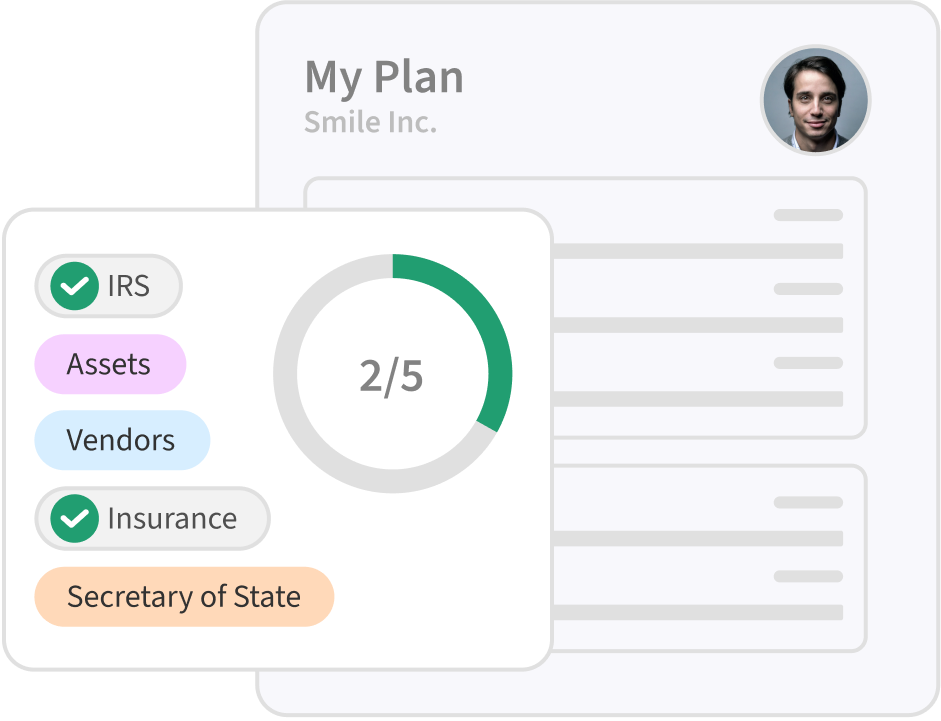In the high-stakes world of startups, why do some soar to success while others falter? The answer often lies not in the brilliance of the idea, but in the strength of the team behind it. Behind every successful startup is a team that doesn't just work together but thrives together, turning challenges into opportunities and pushing the company forward.
But building the perfect team is more than just assembling the most talented people; it's about finding individuals who can collaborate effectively, share a common vision, and complement each other's strengths and weaknesses.
Let’s dive in and learn how startup team dynamics work, the effects of positive and negative team dynamics on the workplace, and finally, how to create a strong, cohesive team that can tackle any challenge.
What are Startup Team Dynamics?
Startup team dynamics are how team members work and interact together. More specifically, it's how people within the company communicate, make decisions, and ultimately solve problems. The factors influencing these interactions include employee personalities, roles, communication styles, and leadership.
Why is Understanding Team Dynamics Important for Startups?
Understanding team dynamics is important because it determines a startup’s capability to innovate, adapt to external changes, and scale operations.
When the leadership creates an environment – by way of example and company policies – that encourages team building, it makes members feel valued and motivated, leading to higher levels of creativity and problem-solving.
Conversely, negative dynamics are marked by miscommunication, distrust, and conflicting objectives. It hinders a startup's progress and affects everything from day-to-day operations to long-term strategic goals.
The Effects of Positive Team Dynamics on the Workplace
Better Collaboration & Improved Problem-Solving Capabilities
A company culture that promotes positive team dynamics creates an environment where employees feel comfortable sharing ideas and giving feedback. This cooperation is more important for startups where departments consist of small teams that often rely on collaboration and cross-functioning to achieve their goals.
When team members trust each other and communicate openly, problem-solving becomes more effective. Different teams and team members combine diverse skills and perspectives to find unique solutions, making the whole greater than the sum of its parts.
Increased Morale and Employee Engagement
Positive team dynamics lead to a supportive work environment, which then leads to increased team morale and engagement.
Employees feel valued, respected, and part of a cohesive group, so they're motivated to give it their all. Such a sense of belonging and appreciation not only leads to higher job satisfaction but also helps with talent retention (a major problem faced by startups).
Motivated employees are more likely to go the extra mile and stay committed to the company's vision, especially when times get hard. In addition, high morale reduces burnout instances and cuts down hiring and training costs.
Enhanced Flexibility and Resilience
Positive team dynamics make employees flexible and resilient in the fast-paced and unpredictable post-pandemic world.
Teams that communicate well and support one another are better prepared to adapt to changes, whether they're shifts in market demand, tech advancements, or internal challenges.
Also, a confident team can recover quickly from setbacks, learn from failures, and grow stronger with time.
The Effects of Negative Team Dynamics on the Workplace
While the benefits of positive dynamics are clear, it's equally crucial to recognize and mitigate the challenges posed by negative interactions within a team.
Communication Breakdowns and Workplace Conflicts
Negative team dynamics often result in communication breakdowns, which has a domino effect on a startup's operations. It usually starts with minor misunderstandings, which then balloon into full-blown conflicts.
Such issues create teams within teams, where members are unaware (or distrustful) of what others are doing and prefer to work solo. With time, people stop sharing critical information, decision-making gets delayed, and short-term goals become long-term.
Decreased Productivity and Creativity
Another consequence of negative team dynamics is that it creates a toxic atmosphere that dampens productivity and kills creativity – it's impossible to find innovation in a stiff and tense environment.
People are less likely to take risks or think outside the box if they feel their ideas are not valued or, worse, met with hostility.
In a nutshell, startups thrive on innovation and agility, without which they struggle to remain competitive.
Higher Employee Turnover
One of the most impactful consequences of negative team dynamics is increased employee turnover. Talented individuals will inevitably leave if they find the workplace hostile or unsupportive.
Startups unable or unwilling to rectify such problems resort to accelerating hiring processes. However, that’s hardly the solution.
Replacing skilled team members is not only costly but also time-consuming. It disrupts ongoing projects by damaging team morale and creating a cycle of negativity that is hard to break. Because startups function with few employees, every team member plays a pivotal role, making the loss of talent often the final nail in the coffin.
How to Improve Team Dynamics in Your Startup
Recognizing the power of team dynamics in your startup's success is just the first step. Implementing tangible strategies to nurture this environment is where the real work begins. Let's explore actionable ways to elevate your team's dynamics:
Build Trust
Trust is the cornerstone of effective team dynamics, but it’s not something you build in a day. Start by adding routine team-building exercises that encourage employees to learn about each other's strengths, weaknesses, and work styles.
At the same time, encourage open dialogues where team members feel comfortable sharing their thoughts and feelings. This openness will help strengthen relationships early on and make it easier to resolve conflicts down the road.
Set Clear Goals and Expectations
Set clear and attainable goals from day one to ensure everyone’s efforts are directed towards achieving the same goal. Then, define each member's individual role and highlight how their efforts will help achieve company objectives.
Doing so will prevent misunderstandings and keep your employees motivated and focused on the task at hand. Routinely review these goals and make necessary updates to keep them relevant and aligned with your startup's evolving needs.
Encourage Diversity and Inclusion
A diverse team brings a range of perspectives, ideas, and solutions to the table. It enhances a startup's creative and problem-solving capabilities and equips it with a powerful competitive edge.
As a startup founder, you can promote an inclusive and diverse culture by welcoming everyone’s opinion, regardless of their background or position. If someone on the team has valuable advice to share, try incorporating it by making it part of operations - this leads to a sense of ownership and motivates skilled employees to go above and beyond.
Give Feedback
Create a culture where feedback is part of the growth process, and constructive criticism is seen as an opportunity for improvement.
Encourage team members to offer and receive feedback in a supportive manner. This practice helps employees and the team as a whole to continually develop their skills and work processes, adapting to new challenges as they arise.
Set the Right Example
The impact of positive leadership in shaping team dynamics can hardly be overstated. As a founder, you should model the behavior you wish to see within your team. Lead by way of example by conducting yourself with integrity, transparency, and respect for others.
By setting the standard, you can directly influence your team's culture and encourage positive dynamics. You should also be proactive in addressing signs of negative team dynamics like conflicts or disengagement.
Get your free founder's guide to shutting down

A comprehensive breakdown of how founders can quickly and easily execute a fully compliant shutdown
Conclusion
In conclusion, navigating the ups and downs of startup life is all about having a great team and making smart choices, even when faced with tough situations. Sometimes, despite having a strong team, factors like market changes or difficulty finding the right talent can lead to hard decisions. If you're considering what's next after your startup, SimpleClosure is here to help.
We help startups using AI and legal tech to make the shutdown process cheaper, faster, and give founders the piece of mind to plan their next move.
Contact us today to see how we can help.


